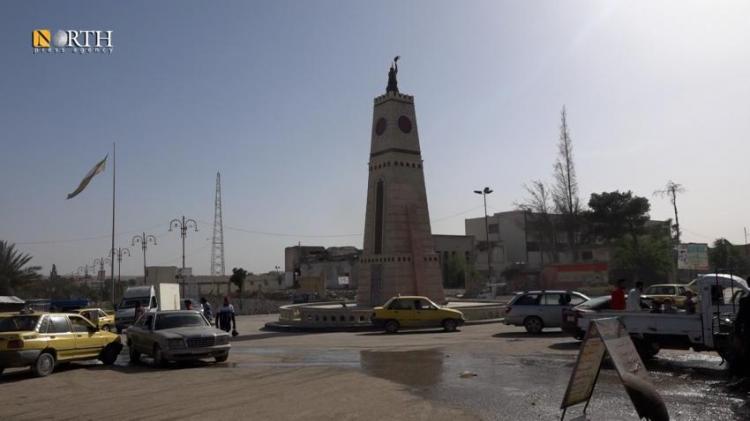Raqqa, North-Press Agency
Abdul Jasim Al-Abed, a resident of Raqqa, smiles as he talks about the current high prices, while remembering his wedding costs in 1970, which did not exceed 500 Syrian pounds.
Nowadays, it has become rare to see a council in Raqqa in northern Syria, without mentioning the high prices and high dollar exchange rate, but what makes these conversations interesting is the old memories about currencies in the past and how they managed their affairs with so little.
Before the dollar and war
Al-Abed says: "In 1969, I went to Aleppo, we bought clothes for the family with 15 Syrian pounds."
In comparison with the value of the Syrian pound in the 1960s and now, he added that the bus fare from Raqqa to Aleppo was one and a half pounds. Today, it is about 10,000 Syrian pounds.
Al-Abed smiles while remembering his wedding in the 1970s, and how he bought his bride a pair of earrings. "One gram of gold was five Syrian pounds."
He said: "We did not know what a dollar is, we have known it since the beginning of the war in Syria."
The value of the Syrian pound continues to collapse rapidly in the informal market. The exchange rate of the US dollar in Raqqa reached 1,900 Syrian pounds, while on Tuesday it ranges between 1,810 and 1,820 Syrian pounds. The price of a gram of gold reached 87,000 Syrian Pounds.
The good days
93-year-old Soan Muhammed al-Nayef lived in a period during which he dealt in parts of the Syrian pound for trades in the 1940s and 1950s. At that time, he worked as a sheep trader moving between Raqqa and Hama.
"The Syrian pound in the mid-1940s was enough to buy clothes for the whole family, but now, a thousand pounds, not even ten thousand, is enough," he added
According to economic experts the rapid collapse of the Syrian pound against the hard currency exchange rates affected the livelihood of people in Syria, leading to hyperinflation which has exceeded 2000 percent.
Prices of consumer goods and foodstuffs increased many fold, causing stagnation in the markets and weak purchasing power among citizens who pay a high tax and the deterioration of the local currency.
Al-Nayef is surprised by the high prices in the markets, as he has not witnessed such a high price in his life. He describes the days he and his generation lived as "good and blessed days," but today, SYP 1,000 is no longer sufficient to survive even a few days.
Youth also have memories
Residents of the city of Raqqa, like other areas, fear the collapse of the value of the Syrian pound even more during the coming days, and that life may become more difficult than it is now.
Abdullah al-Muhammad, from the village of Raqqa Samra 4 km east of Raqqa city, said that one dollar was equal to SYP 50 in 2011, where the wages of the museum workers (laborers who gather in front of the Raqqa Museum in search for work) was SYP 100 per day (2 dollars), and it was sufficient for living and expenses.
Although the current price crisis has complicated causes and conditions, al-Muhammad attributes some of the high cost of living today to "the greed and monopoly of merchants."
Observers and economists link the accelerating collapse of the price of the Syrian pound to recent developments and events such as US sanctions and low GDP after years of war and the failure of the Syrian government and the Autonomous Administration to set limits on foreign exchange rates.

